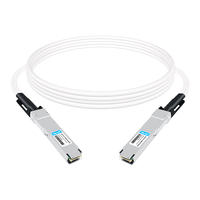Established new market standards and types of connectors. Optical Networking and lower-level Optical Transport have experienced a rise in demand for 400G OSFP. At the same time, many vendors are reluctant to promote their products to meet this new emerging standard within the market. There are clear advantages why Optical Interconnection will play a vital role within the switch data centers and provide rapidly expanded support to cover various bandwidth ranges. At the very least, this paper concludes with a summary, findings, and current status; however, to achieve this, we first need to know the scope of the work. It will also touch on the concepts of Fiber And Optical Technologies, which should be used in the deployment and development of the new market and networks on which this paper focuses.
Table of Contents
ToggleHow Does OSFP Technology Revolutionize Data Centers?
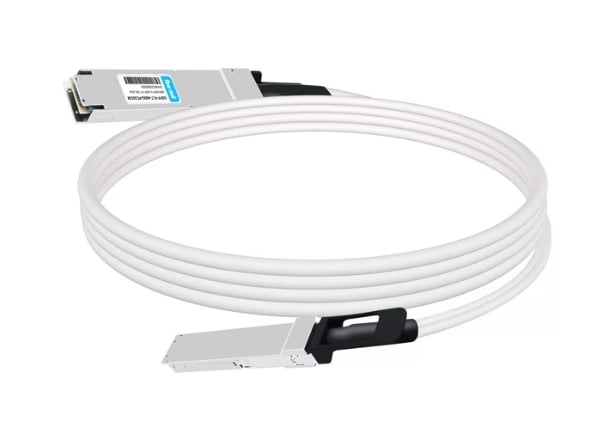
OSFP technology transforms traditional data centers through the massive improvement of data transmission and operational efficiency. Able to transmit data at rates of 400 gigabits per second, OSFP cables help quickly transfer data, which is vital in dealing with large data volumes characteristic of today’s digital ecosystems. Rack density is even further enhanced by the small size of OSFP connectors, which maximizes efficient rack space usage and lowers overall costs. Furthermore, OSFP cables promote energy saving, allowing data centers to maintain high performance with an energy-efficient approach. Coupled with these capabilities are the advantages of increasing the data center scalability and reliability and reducing the operational costs, hence readying the OSFP 400g passive direct attach solutions to sustain future data center requirements.
Exploring the OSFP Form Factor
The OSFP (Octal Small Form-factor Pluggable) has been developed to address today’s data centers’ need for high bandwidth while allowing the design to achieve good thermal management and high-density interconnectivity. The small, flexible design takes in 16 high-speed transceivers at a single interface, significantly increasing the bandwidth per switch or server unit. This leads to a reduction of the footprint and an increase in data throughput capabilities. Moreover, the OSFP form factor has been designed to be upgraded easily to the next level in new technologies, so wholesale changes to existing hardware are unnecessary to advance the data center structure.
The Role of PAM4 in Enhancing Data Transfer
The innovative PAM4 technique is critical in increasing data bandwidth as it transfers twice the amount of data with the same infrastructure. It uses four levels instead of the past signaling systems dependent on two (0 and 1, low and high in level), thus efficiently encoding and transmitting two bits of two-level data across a single symbol. This increase in data rate will be a significant focus because there is no need for extra bandwidth, making it ideal for data transmission systems that require a great deal of speed. Regarding bandwidth optimization and performance enhancement, PAM4 will contribute significantly to the ever-increasing requirements for data communication systems on today’s networks.
Advantages of OSFP in Data Center Applications
Figure 11 shows that 400f commands regarding OSFP-3U High-Density Optical Port configuration factor improve the density of up to eight Embedded Optical Modules integrated with interface and electrical transceivers within a 12x12x5 mm package. To view the integration in use, enclosed are photos of volume prototypes that the first series decided to reference as references only. The OSFP Multisource Agreement Association emphasizes, “OSFP is a game-changing technology that will revolutionize cloud service and data center networks, and our customers’ capital investment will be minimized as self-contained components can be replaced.”
What Is the Difference Between Direct Attach and Active Optical Cables?
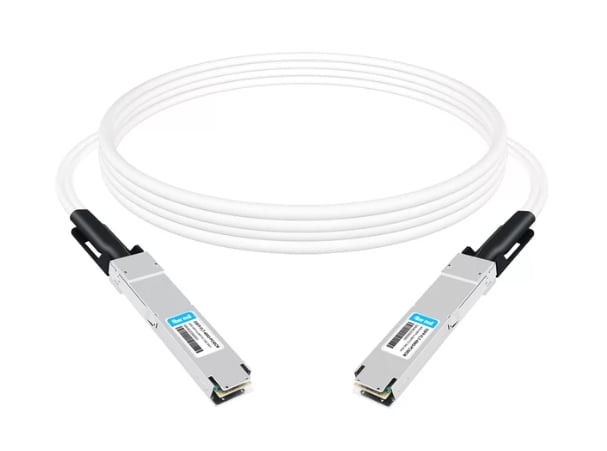
Understanding Direct Attach Copper Cables
Direct Attach Copper (DAC) cables are bandwidth-intensive wiring mainly used for connecting devices over short distances in and around data centers. DAC cables have copper wires with an insulator covering them and a transceiver permanently attached to the end of each cable or wire, which makes the wire with a transceiver permanently attached. They are power efficient and use a direct connection instead of an outside transceiver module, which lowers expenses related to connectivity. These cables are also favored in such situations because of their ability to transmit data at high speeds for short distances (generally around 7 meters). Thus, low power consumption and low latency make it efficient for high-density networks. Their plug-and-play feature offers ease of deployment and maintenance, making them suitable for connecting devices within or near a single rack. Compared to active optical cables (AOC), they have less flexibility in reach and compatibility with various network devices.
An Overview of Active Optical Cables
AOCs embody an active optical cable that comprises a multimode fiber transceiver and a DAC cable, which allows them to be better deployed for long-range data transmission. Aobs can now utilize optical fibers to transmit data by leveraging light signals instead of electrical signals, generally allowing a more extended reach of more than 100 meters, depending on the cable type. Their advantages include superior resistance to EMI, reduced attenuation with distance, and lightweight to ease cable bending and handling. These benefits give rise to AOCs being a good option for connecting inter switches/routers or high-performance computing systems, which require the transmission of large volumes of data over the networks to be transmitted quickly and efficiently. Although more expensive than DACs, AOCs have a certain degree of flexibility and interoperability in a more complex networking environment, making them more efficient where speed and distance matter.
Comparing Power Consumption and Efficiency
Several striking features appear when investigating the power consumption and efficiency of Direct Attach Copper (DAC) cables and comparison with Active Optical Cables (AOCs). As a rule, DAC cables consume less power because they are passive devices than AOCs. This efficiency is because DAC cables do not need the extra components required to convert an electrical signal into light, the primary function of AOCs. However, AOCs, on the other hand, have limitations in power consumption because they are less efficient; still, they are very effective in different components such as bandwidth and distance. AOCs’ ability to transmit high amounts of data with low signal loss more than offsets the high power use and this is common with the OSFP of DAC. This situation is essential in locations where a large volume of data needs to be transmitted over a long distance since the efficiency of the overall system rather than the power used by the cable is the driving factor. Generally, the considerations for choosing between DACs and AOCs are network performance versus reach and other environmental factors.
Why Choose 400G OSFP DAC Cables?
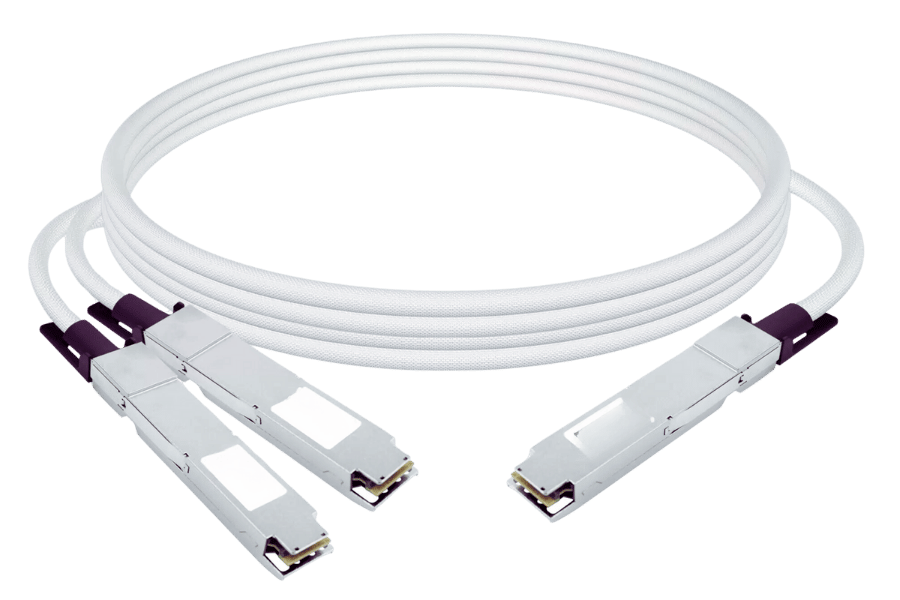
Benefits of Passive Direct Attach Copper Cables
Passive Direct Attach Copper (DAC) cables are extensively developed, especially in short-distance networking areas, where 400g passive direct attach copper can provide tangible benefits. To begin with, because of their uncomplicated architecture and design, they are economically viable as this helps to drive down overall infrastructure costs. DAC cables guarantee high signal fidelity and low latency, which are especially important in data centers and high-frequency trading situations where efficiency and speed matter even in a fraction of a second. Additionally, plug-and-play wiring enhances ease of use and eliminates additional transceivers and optical components when the cables are deployed and maintained. Such ease of deployment, coupled with low power requirements, makes it possible to consider DACs even in those areas where cost-effectiveness, simplicity, and reliable performance over short distances, for example, 50g connection, are critical.
Key Features of OSFP DAC Cables
OSFP DAC cables, which are in high demand and are reputed for their effectiveness, come with several essential characteristics that fit the requirements of contemporary data centers. To begin with, high-density connectivity is achieved as eight channels of 400 gigabits per second (Gbps) are supported. This makes them perfect for any application that requires high-speed data exchange. The fact is that these cables have improper high thermal management due to their passive structure; thus, there is no need for extra cooling systems, therefore reducing running costs. Finally, OSFP DAC cables are compatible with existing network systems, thus they can be used for improving the network performance in both new devices and modernized systems.
Applications in High-Speed Interconnect Solutions
In the context of high-speed interconnect solutions, OSFP DAC cables have, over the years, become the preferred interconnect in next-generation data centers that need scaling and effective networking solutions. First, they are widely used in hyperscale cloud data centers to alleviate the transfer of large amounts of data required for virtualized workloads and big data. Secondly, they form an essential part of enterprise data management, allowing efficient data transport with high dependability and low latency to sustain business operations. Lastly, OSFP DAC cables have become popular among telecommunication companies seeking to expand their networks to offer more bandwidth to address today’s requirements like 5G and beyond. Such applications illustrate the role OSFP DAC cables play in achieving high-performance and speed data transmission in a world with constant changes in digital communication.
How Do Breakout Cables Enhance Network Flexibility?
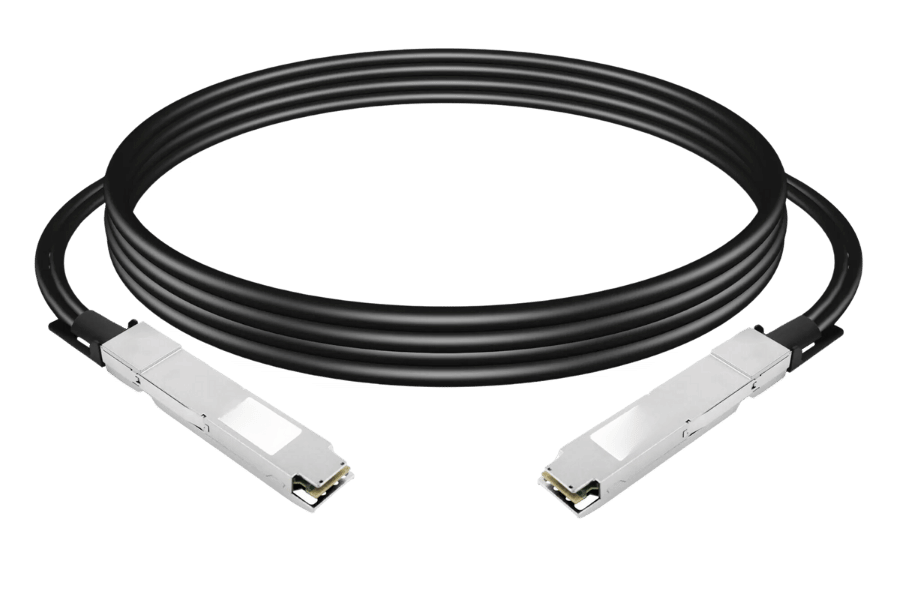
Exploring Breakout Cable Configurations
Breakout cables contribute to the simplification of the network by providing a single high-speed port, which may be divided into numerous lower-speed ports so that the total available capacity is fully utilized. In most instances, however, a breakout cable aids transmission path splitting without affecting the transmission performance, allowing multiple data rates, especially 400g passive direct attach copper. Cost efficiency follows the approach, which allows adaptability in networking situations, particularly in data centers where optimizing port density and bandwidth is necessary. In addition, breakout cables extend the functionality of the network and enhance the efficiency of operations while maintaining high data quality. Thanks to their versatility, breakout cables comply with numerous protocols and strategies and are vital for contemporary designs in response to emerging technological trends.
The Impact on Network Scalability and Performance
Taking breakout cables into consideration concerning how they affect the network’s scalability and performance, I observe that they are essential for meeting the growing data requirements more efficiently. Breakout cables enhance the scalability of the network as one high-speed interface can be leveraged to connect more lower-speed interfaces, thereby increasing throughput without increasing infrastructure costs. From a network performance perspective, they provide high data rates transferred over several interfaces simultaneously yet with minimal latency, which is necessary in the case of heavy traffic applications. These cables also offer features for interfacing through different networking protocols so that innovations in the future can be easily incorporated into the overall network structure, positively affecting its efficiency and scalability.
What Are the Future Trends in 400G and Beyond?
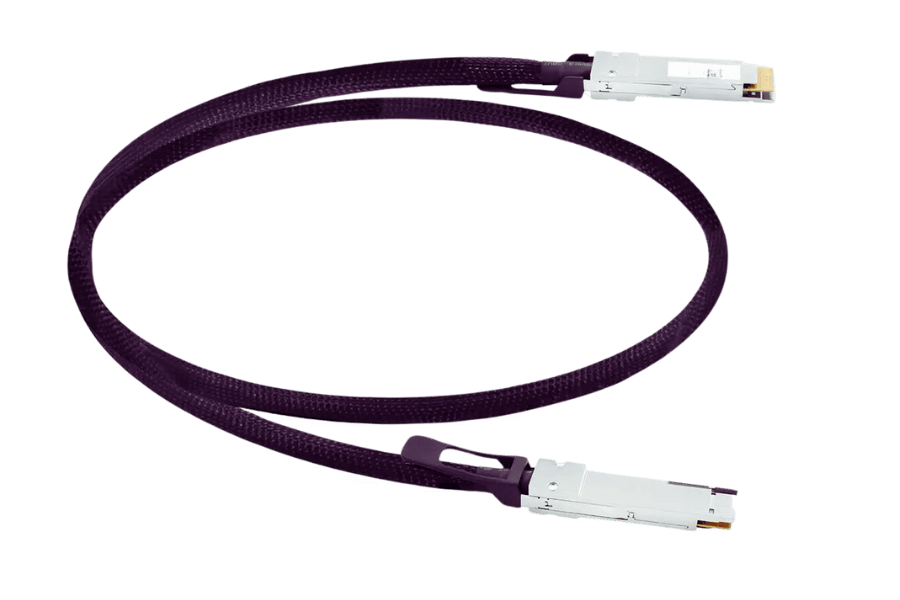
The Evolution Towards 800G OSFP Solutions
As I move to 800G OSFP (Octal Small Form-factor Pluggable) solutions, there is a shift and progress that has been attained primarily due to the demand for more throughput and efficiency of data centers. This change builds on the advancements of 400G technology, as it seeks to increase the port density and reduce the power used per bit for data transmission. To achieve the 800G specification capabilities, industry leaders are creating new robust optical components and modulation techniques that enable more significant amounts of information to be transmitted over the existing infrastructure. Additionally, these solutions would be able to enhance technologies like AΙ, IoT, and advanced Cloud services, emphasizing the role of 800G OSFP solutions in making robust network architectures in the future.
Innovations in Cable Assembly Technologies
Notable improvements in cable assembly technologies are boosting performance and efficiency. One example is the creation of high-density interconnects, which meet the increasing need for smaller, more efficient data transfer solutions. By adopting efficient manufacturing processes, these assemblies can fit more connectors into smaller spaces without reducing the amount of data that can be transmitted.
Additionally, solid materials and new shielding methods helps enhance cable assemblies’ durability and signal quality, including the latest 400g passive direct-attach copper variations. This makes it possible to send high-frequency, high-speed data over lengthier cables and short distances due to minimal signal attenuation, which is crucial in upholding modern network performance requirements.
Finally, factory-automated processes are embraced to increase cable assembly uniformity and reliability. Automation minimizes risks of errors from human contact, speeds up output, and provides room for mass production based on market needs. All these changes make it possible to have a sound infrastructure to cope with the growing needs of data-heavy applications and future networking standards.
The Future of Infiniband and SFP Modules
Infiniband and SFP (small form-factor pluggable) modules of the future will affect the increasing needs of modern data centers, which can handle higher amounts of data per unit of time with fewer delays. The trend of Infiniband gains is in progress, with further developments in scalability and efficiency that seek to be effectively deployed in Advanced Computing. These developments are critical for more demanding applications like scientific computing and real-time processing tasks.
On the other hand, SFP modules focus on higher levels of integration, thus enabling more data rate possibilities and better network flexibility. The latest SFP versions, namely SFP28 and all that will follow, will incorporate more efficient cooling controls and thermal management, which would be more competitive with the new blossoming user demands for higher network traffic and more varied data usage. To date, these three technologies are on a qualifying podium to become one of the key elements in constructing future networks that will be ever-ready to support the exponential growth of big data, cloud computing, and IoT devices.
Reference Sources
Frequently Asked Questions (FAQs)
Q: What is a 400G OSFP transceiver and how does it compare with QSFP-DD?
A: A 400G OSFP (Octal Small Form-factor Pluggable) transceiver, best suitable for Ethernet 400 gigabit applications, is a type of optical module capable of 400G capacity. In the face of the miniaturization trend of the QSFP-DD (Quad Small Form-factor Pluggable Double Density) interface, the OSFP, although somewhat more extensive, ensures improved thermal management and higher potential speeds in future generations. There is support for 400G for both the QSFP-DD and OSFP, but OSFP takes precedence for 800G& beyond adjudications as it is engaged for future-gen purposes.
Q: What are the benefits of deploying 400G OSFP AOC (Active Optical Cable) solutions?
A: In the context of 400G OSFP AOC solutions, regardless of the other factors, there are proven advantages in terms of power efficiency, distance, and latency compared to conventional copper cables. They are best suited for data center interconnects and environments with high-performance computers with high bandwidth & low latency requirements, especially with the new soft top flat technologies such as 400g. Moreover, AOCs have better signal integrity across long distances than directly attached copper cables.
Q: What distinguishes the 400G QSFP-DD cables and the 400G OSFP types?
A: 400G QSFP-DD and 400G OSFP cables can support 400 Gigabit Ethernet but have different form factors and connectors. Meanwhile, the connection mechanism for OSFP is more thermally efficient and has a better prospect with 800G and even higher standards in the future. The two are often selected based on the network’s specifications, available equipment, and preferability of 400g of flat-top solutions.
Q: What is the maximum length of OSFP to OSFP direct attach for the cables?
A: Numerous OSFP to OSFP direct-attach cables are available in lengths well-suited to various data centers and network patterns. Standard lengths are 0.5m, 1m, 2m, and 3m. Very short cables such as 0.5m are suitable for short rack-to-rack installations, whereas longer ones are used for longer spans, as in the case of multiple racks in a data center.
Q: What features do the 400G OSFP passive direct attach copper cables exhibit appreciably?
A: The 400G OSFP passive direct attach copper cables are made with high-quality twinax cable construction, which offers the next generation’s performance best suited for short-reach applications. These cables provide low latency, high bandwidth, and excellent signal integrity. They are inexpensive alternatives for in- and near-rack connections, supporting 400G full loads, usually up to 3 meters. These cables do not need any power as they are passive, which is ideal to support energy efficiency in the data center’s interconnectivity.
Q: Is there an OSFP cable that is generic and compatible with a non-branded cable? How does the strength of both wires differ?
A: Yes, generic compatible OSFP cables are available for sale and appear to serve cheaper alternatives than their branded counterparts. These cables are built and manufactured to meet the performance specifications of branded cables, including advanced options such as OSP and OSP dac. Even though they do not incorporate brand-specific attributes, generic compatible cables deliver the same quality and durability at a lower cost than stranded copper dome twinax cables. All generic wires should be appropriately tested and certified for the equipment used, especially around cables available for sale.
Q: What is the difference between OSFP 400G flat-top cables and standard OSFP cables in terms of their functionality and purpose?
A: OSFP 400G flat-top cables have been manufactured with a redefined OSFP connector with an overall flattening on the top surface. This reconstruction can potentially enhance airflow and cooling management in high-density switch situations. Most conventional connectors on the OSFP Standard Cables are round. The flat-top design should be helpful in some rack configurations where cable management and cooling concerns are primary. They differ only in the physical connector shape and perhaps some thermal benefits. Otherwise, they both support the same 400G speeds and protocols.
Q: Besides those above, how do qualified passive copper cables provide advantages for 400G OSFP connections?
A: Passive copper cables qualified and meant for 400G OSFP connections have several advantages. These cables have been certified to pass through some testing standards, including the internal market requirements on signal performance, integrity, and overall quality. They are appropriate for short-reach usage, around 3 meters or less. Because these cables are passive, they don’t consume electrical energy, promoting power saving in data centers. Moreover, these cables are also well manufactured on higher gauge AWG, ensuring full 400G speeds are achieved during extreme flexing and installation.
Related Products:
Related posts:
- The Ultimate Guide to Direct Attach Copper Twinax Cables
- Exploring 400G QSFP-DD AOC: Understanding Active Optical Cables and Their Applications in Data Centers
- Everything You Need to Know About Arista Networks’ Compatible Cable Solutions
- The Ultimate Guide to Mellanox DAC Cable: Everything You Need to Know About Direct Attach Copper

